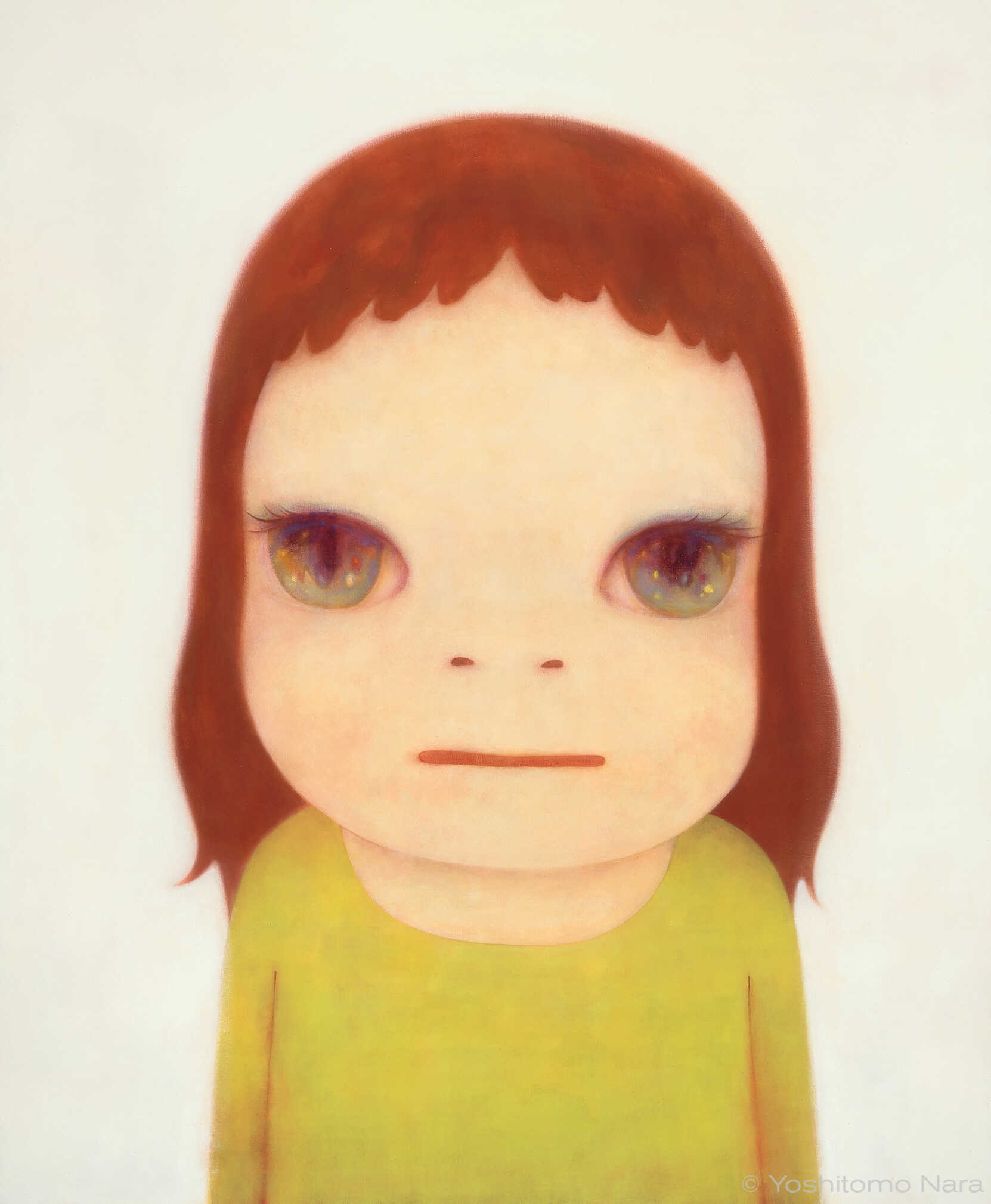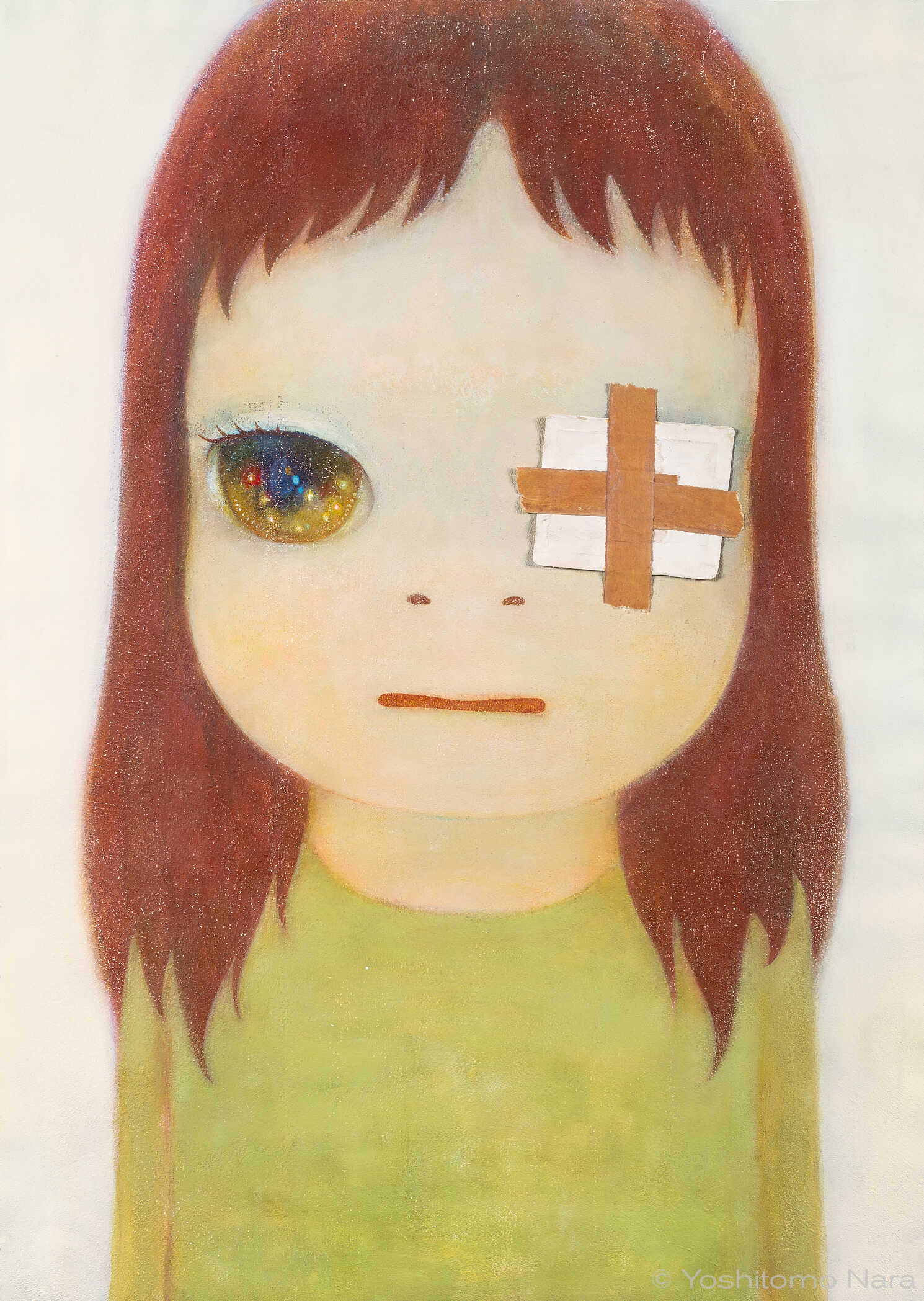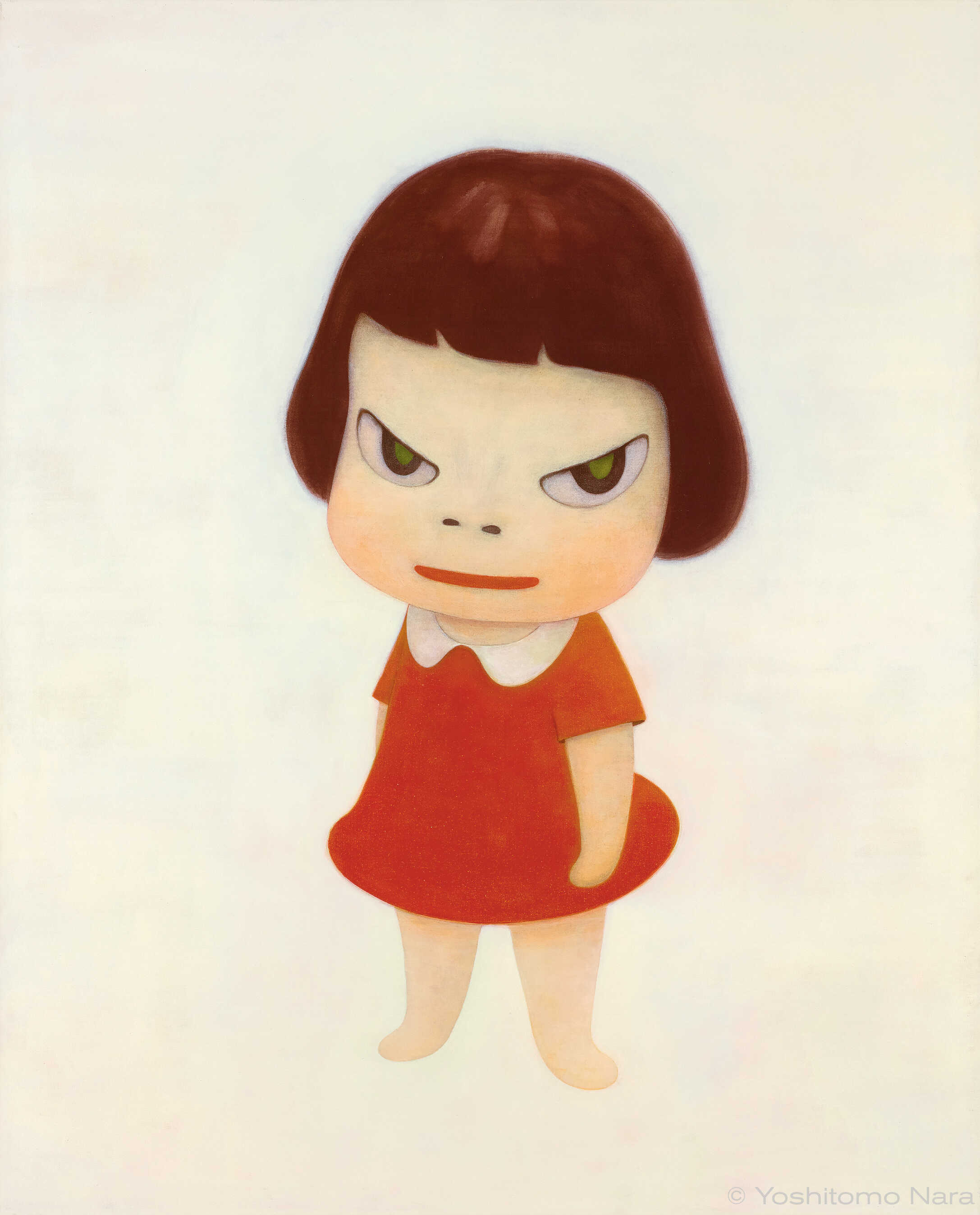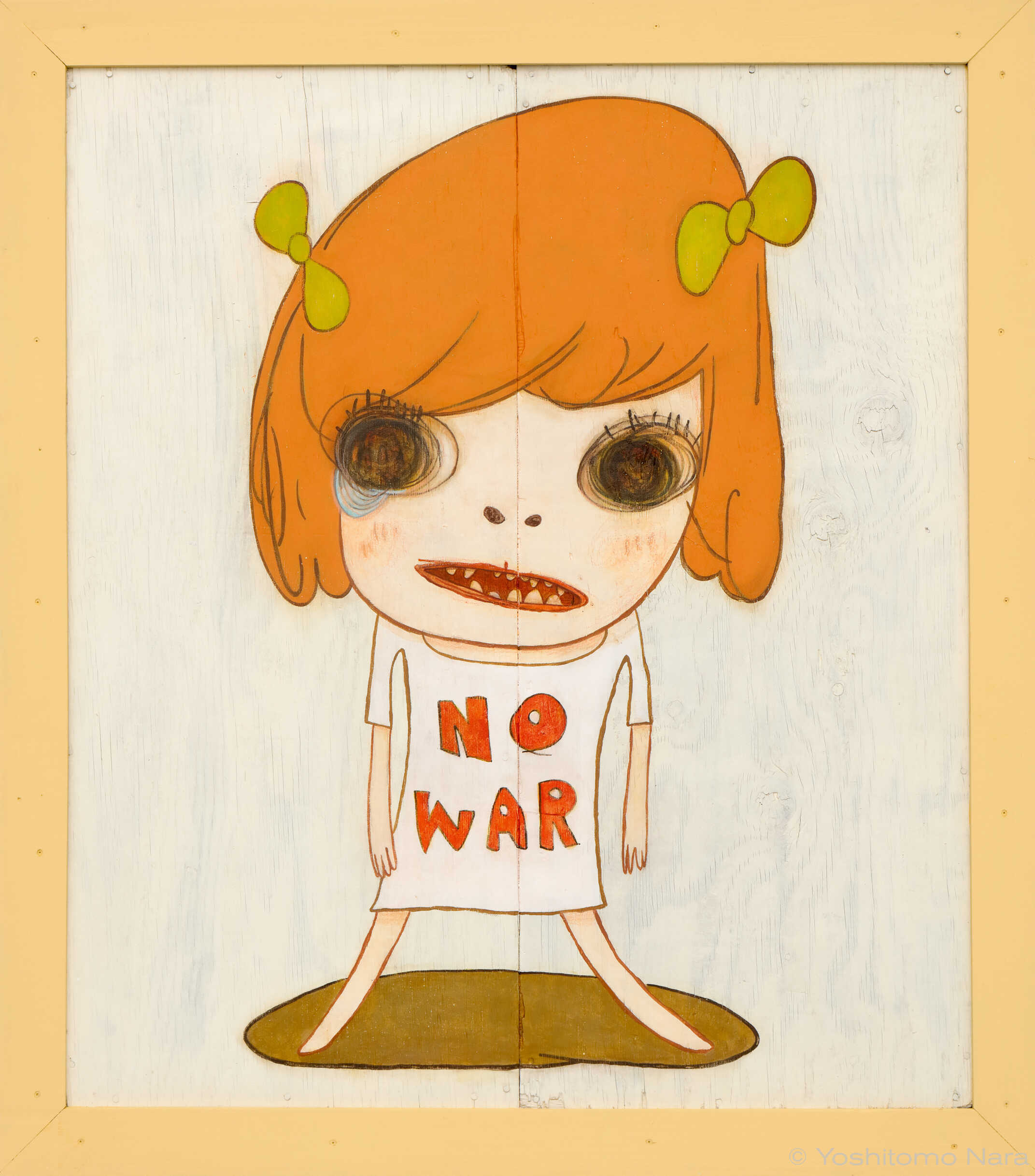Japanese artist Yoshitomo Nara (b. 1959) is one of the most celebrated representatives of his generation. He received international recognition for his “Angry Girls”: stylized depictions of large-headed girls with captivating eyes and threatening, defiant and angry, or melancholy and insecure expressions that became his signature works—and are now considered icons of contemporary painting. In the exhibition “Yoshitomo Nara”, the artist’s first large retrospective in Germany, the Museum Frieder Burda presents paintings, drawings, sculptures, and installations from the last four decades.
While the aesthetics of Nara’s characters are reminiscent of mangas, his figures, animals, and hybrid beings are first and foremost an expression of his own feelings and thoughts. Sources of inspiration include his deep-rooted memories of a lonely childhood with working parents, his love of music and literature, his knowledge of Japanese and European art history, and encounters with people and other cultures.
Yoshitomo Nara was born in a suburb of Hirosaki in the north of Japan in 1959. After studying painting at the University of the Arts in Aichi, he was drawn to the renowned Kunstakademie in Düsseldorf in the late 1980s. He remained in Germany for twelve years and further developed his unique visual language there. In 2000 Nara returned to Japan, where he still lives and works.
Among the international lenders are the Jumex Collection in Mexico City, the Leeum Museum of Art in Seoul, the National Museum of Art in Osaka, and the National Museum of Modern Art in Tokyo. The exhibition also includes numerous outstanding works from private collections that are normally not accessible to the general public.
Exhibition co-organized by the Guggenheim Museum Bilbao, the Museum Frieder Burda, Baden-Baden, and the Hayward Gallery, London.


_1997.jpg)


